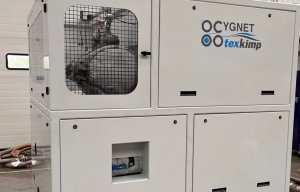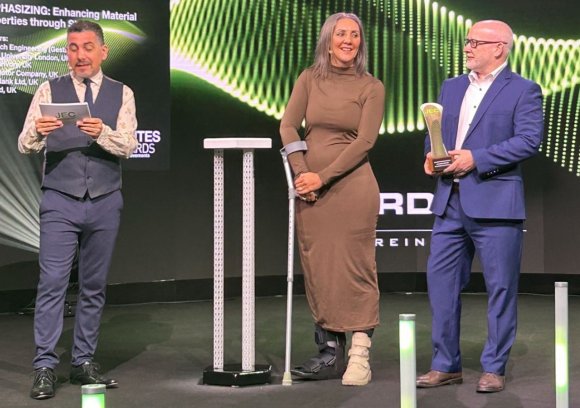
Pressolysis unit en route to Manchester University
Pressolysis process enables the high-yield reclamation of clean, reusable fibres with the retained length and properties of virgin materials.

13th February 2024
Innovation in Textiles
|
Blackburn, United Kingdom
Blackburn, UK-based B&M Longworth and its partners have claimed the JEC World 2024 Innovation Award in the Circularity and Recycling category for the development of an advanced new material called ‘glassene’.
With funding from from Innovate UK, the Emphasizing Project is recycling glass fibre composites using Longworth’s Deecom ‘pressolysis’ process, followed by the application of various sizing chemistries to provide glassene with a price-point close to glass fibre, but the performance properties to rival some carbon fibres, initially for specific automotive applications.
The project has brought Longworth together with EMS-Chemie, Ford Motor Company, Gen2plan, Gestamp, TWI and the Brunel Composites Centre at Brunel University in London. It has been assessing, processing and analysing materials from wind turbine blades, as well as automotive and marine parts, to create roadmaps for recycling. The aim is to demonstrate the feasibility of fabricating automotive end products from upcycled glass fibre materials, including a technical step change from established processes such as pyrolysis and solvolysis with Deecom technology.
Pressure swings
Using a combination of compression and decompression cycles or ‘pressure swings’, the Deecom process gently removes a range of organic materials from composite fibres, effectively reversing the bond between fibre and matrix. The process takes place in a pressure vessel filled with superheated steam.
Depending on the polymer type, temperatures above 200°C will melt or soften the polymer and a degree of hydrolysis will occur. When at pressure, the steam will penetrate fissures in the polymer where it condenses before it boils on decompression, causing an instant physical fracturing of the polymer chain and carrying away monomers and oligomers along with polymer fragments from the outer faces.
Since the process interacts with the resins, it can reclaim the format, length and structure of fibres from post-industrial or end-of-life waste composites, whether cured or uncured.
High yields
“The pressolysis process enables the high-yield reclamation of high-quality, clean, reusable fibres that are free from residues and have a retained length and properties akin to virgin materials,” explained B&M Longworth director Jen Hill. “Within the Emphasizing Project, the recovered, clean fibres are subsequently being upcycled through resizing. The aim is to find several use cases for the resized material and for the industry to gain access to a brand new, advanced material – glassene – that will be on-shored in the UK and readily available at a low cost.”
Glass fibre reinforced plastic (GFRP) makes up the majority of the global £54.5 billion composites market according to AVK, the Federation of Recycled Plastics based in Frankfurt, Germany, and the construction, infrastructure and transport sectors are large-scale users, accounting for 70% of the one million-plus tons of GFRP produced annually in Europe alone.
In addition, the wind energy sector is expected to decommission 40-60,000 tons of composite wind blade material over the next two years, further adding to the amount of GFRP waste.

Business intelligence for the fibre, textiles and apparel industries: technologies, innovations, markets, investments, trade policy, sourcing, strategy...
Find out more